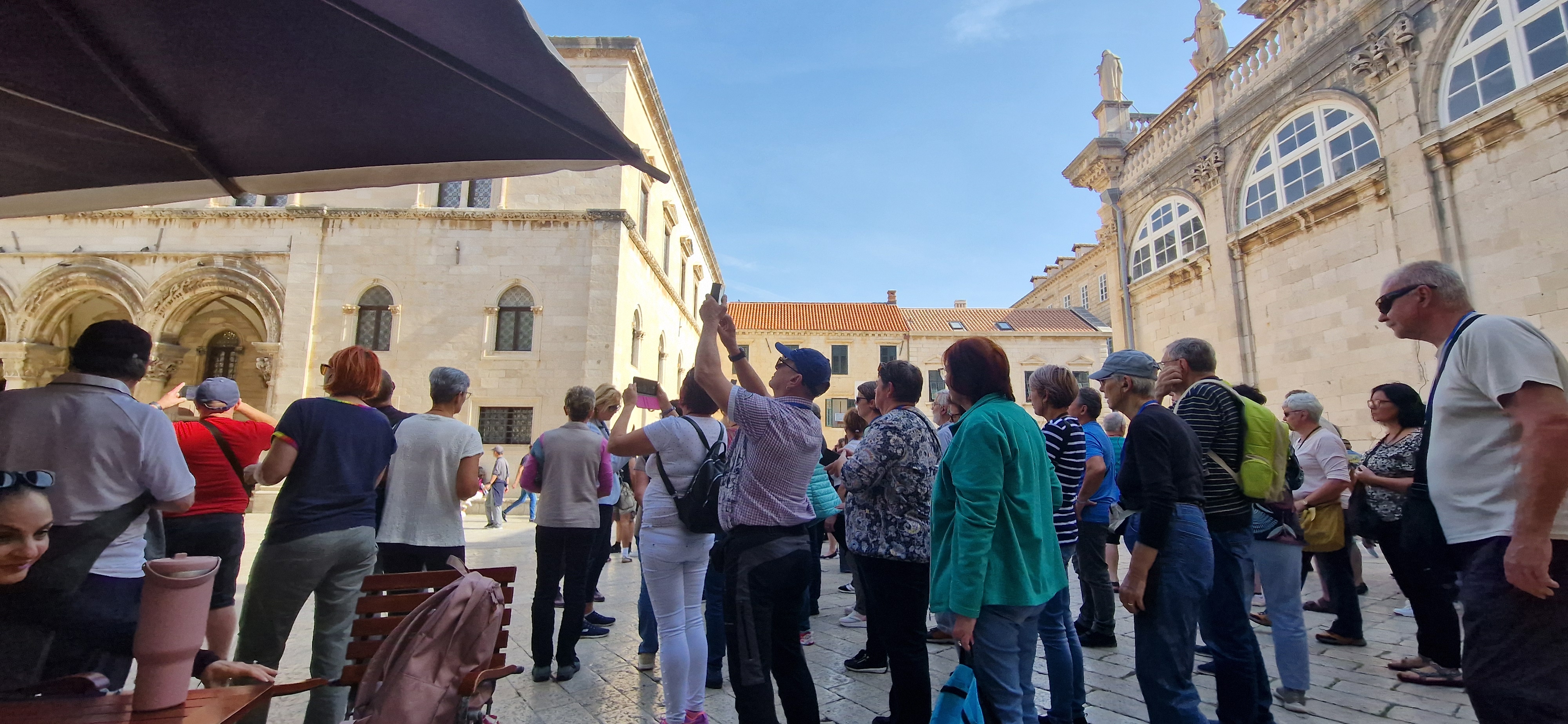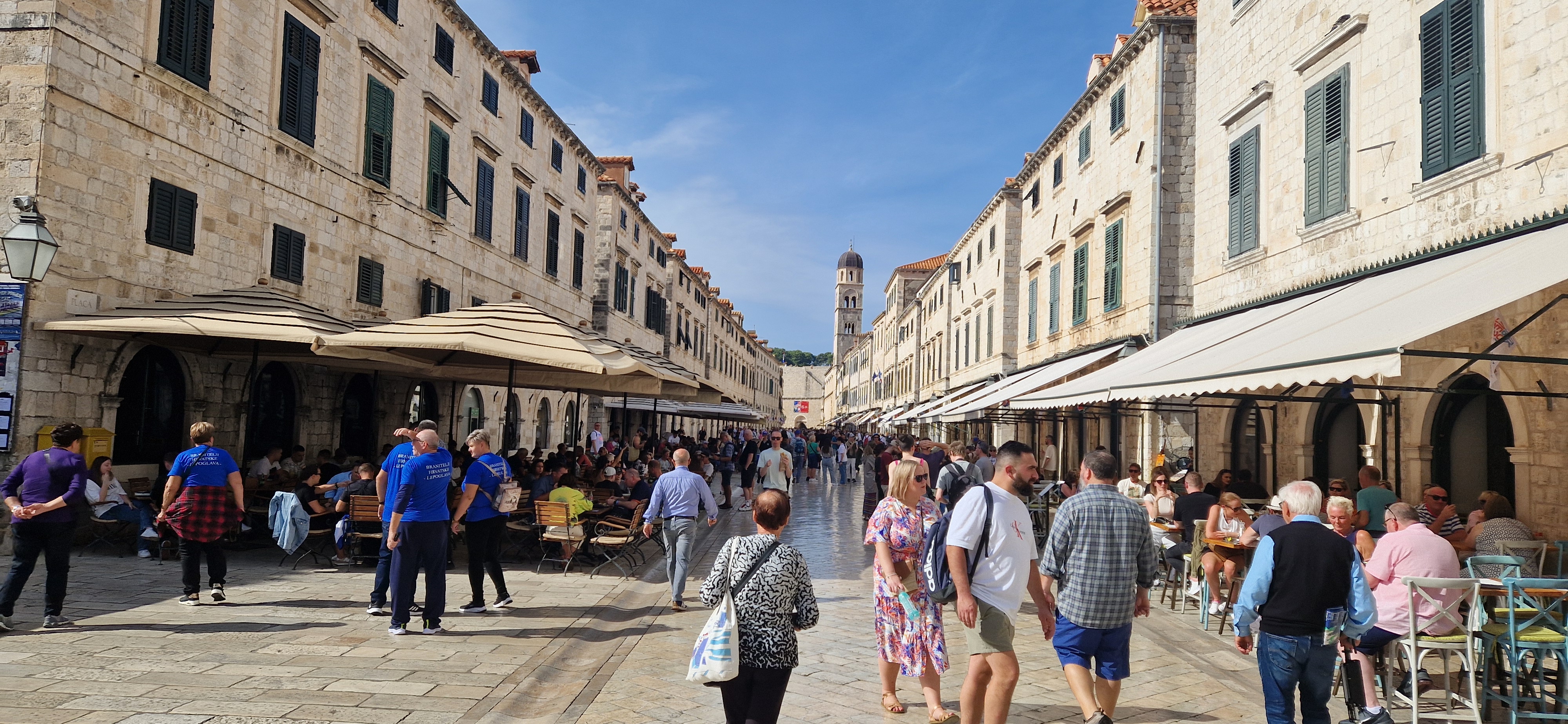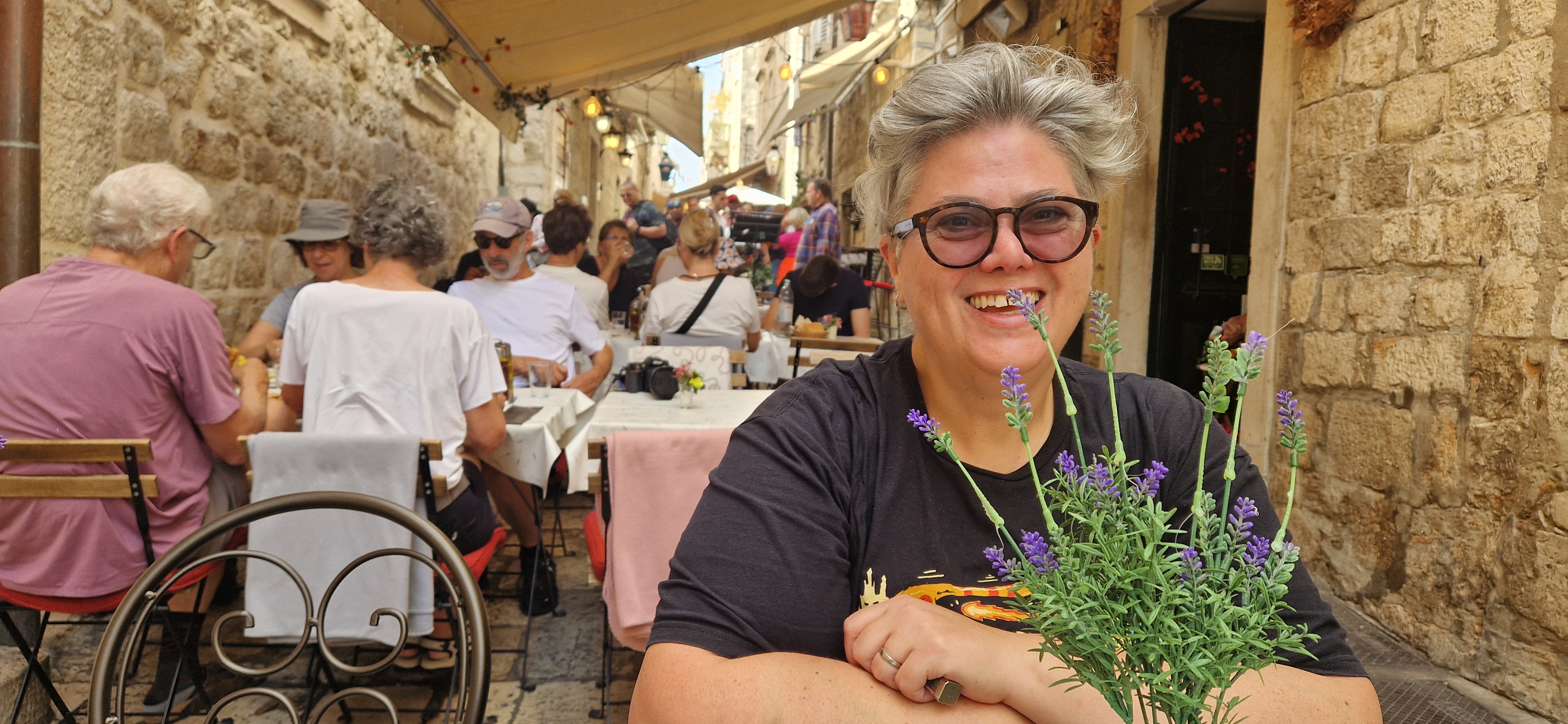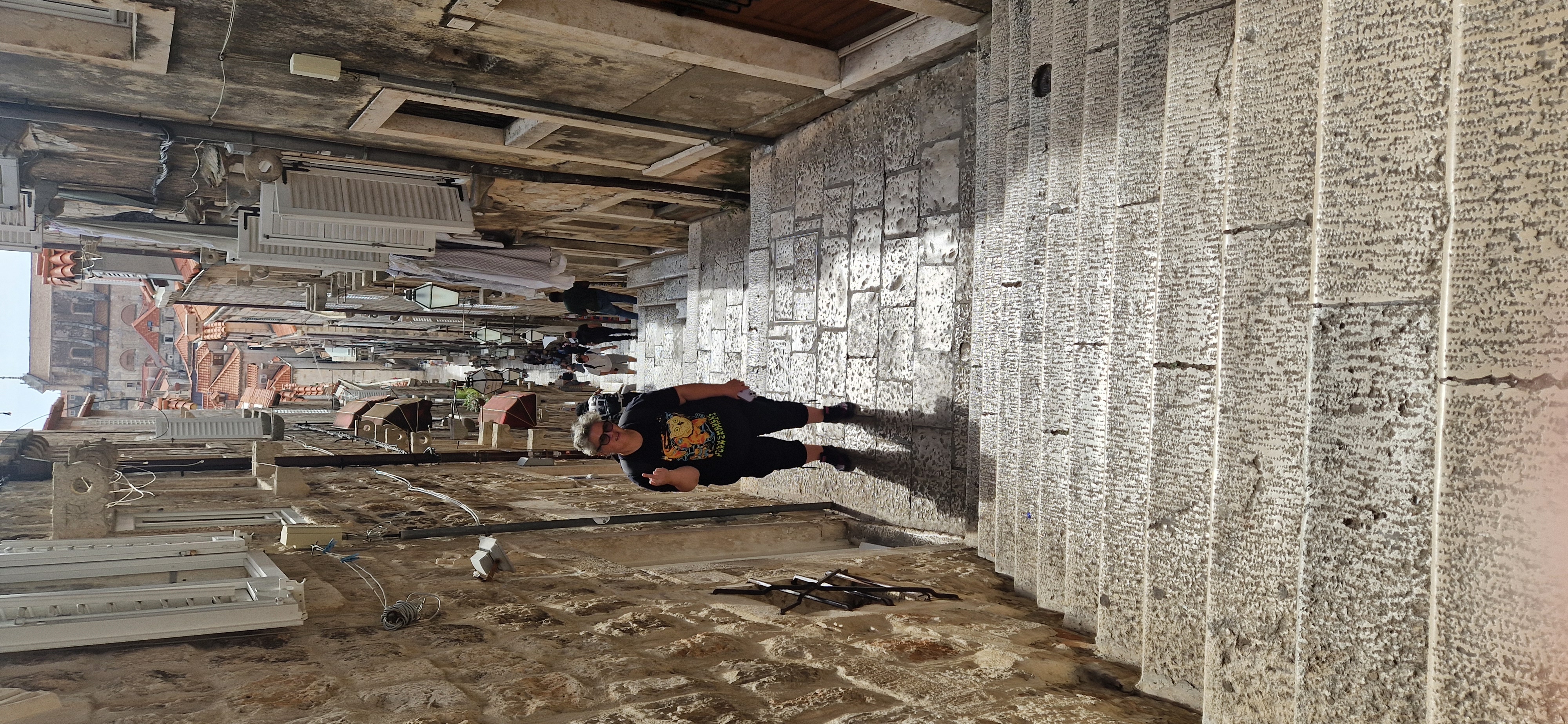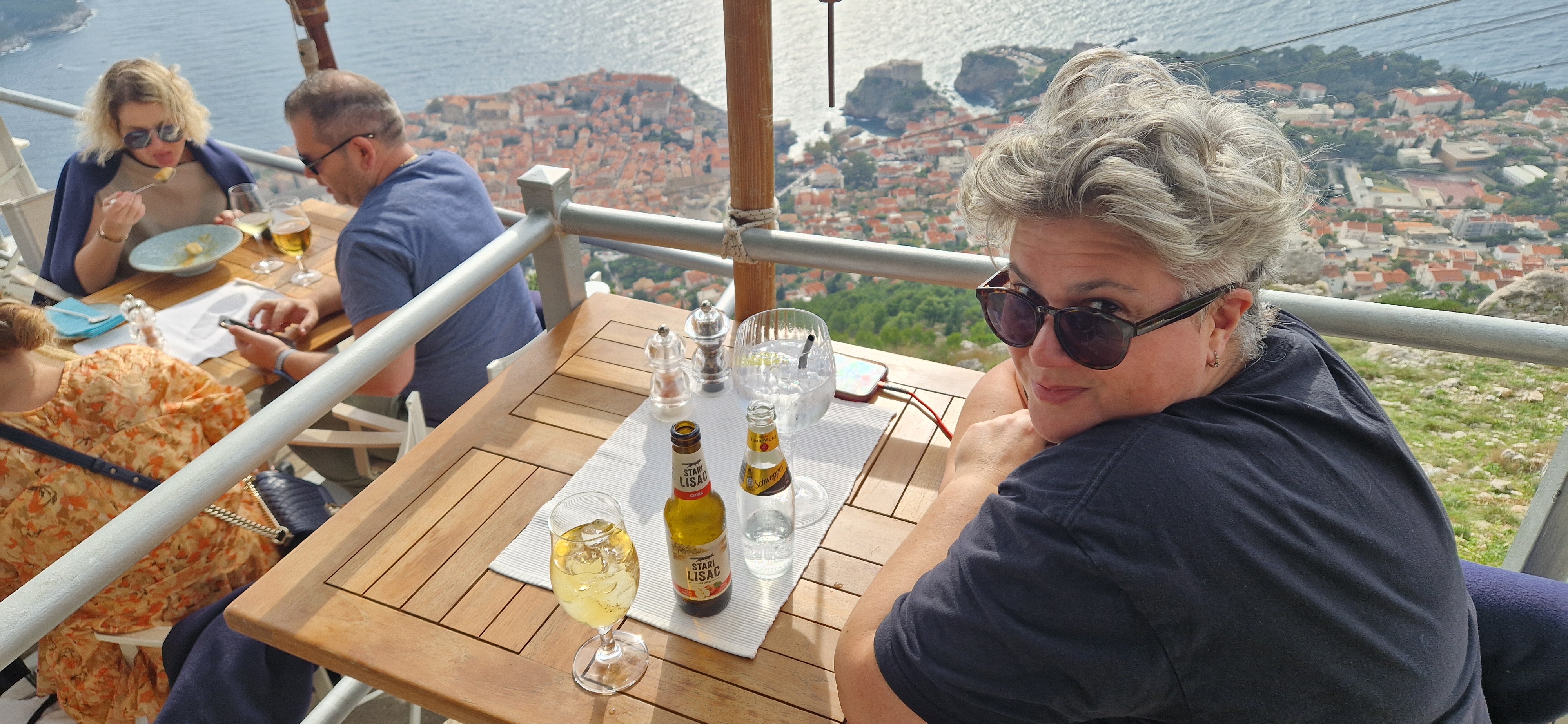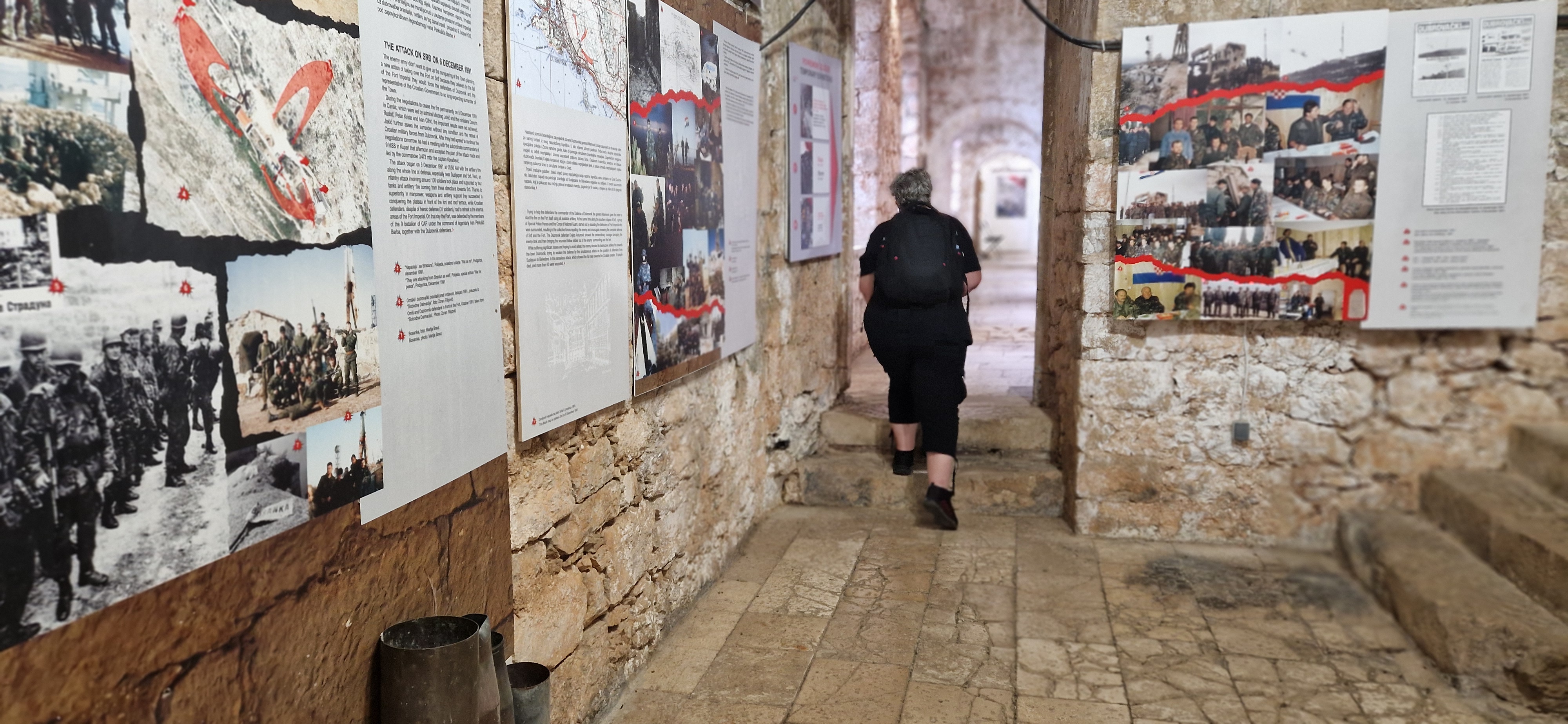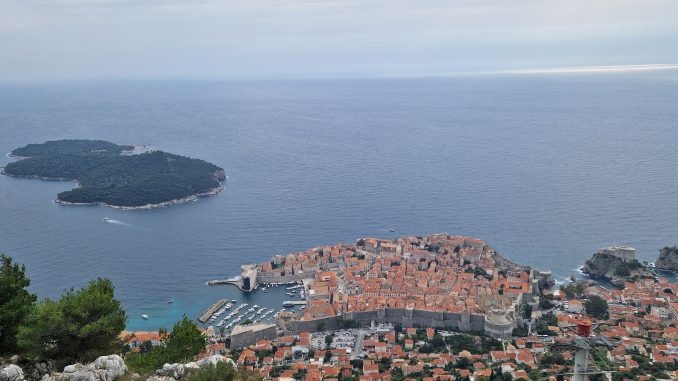
Finally made it into Dubrovnik Old Town today for a proper mwch around.
The public transport system appears to be efficient and punctual. We have bought a Dubrovnik Pass, which covers entry fee to most of the museums, free transport within the municipality and discounts at loads of other places. And all for the cost of going up onto the old town walls, which is included. It’s a no brainer really. Passes are available for 1 day, 3 days & 7 days, depending on the length of your stay and are activated at first use. Scan your phobe code on the bus & the driver will give you a paper ticket. Use this paper ticket on the bus from then on.
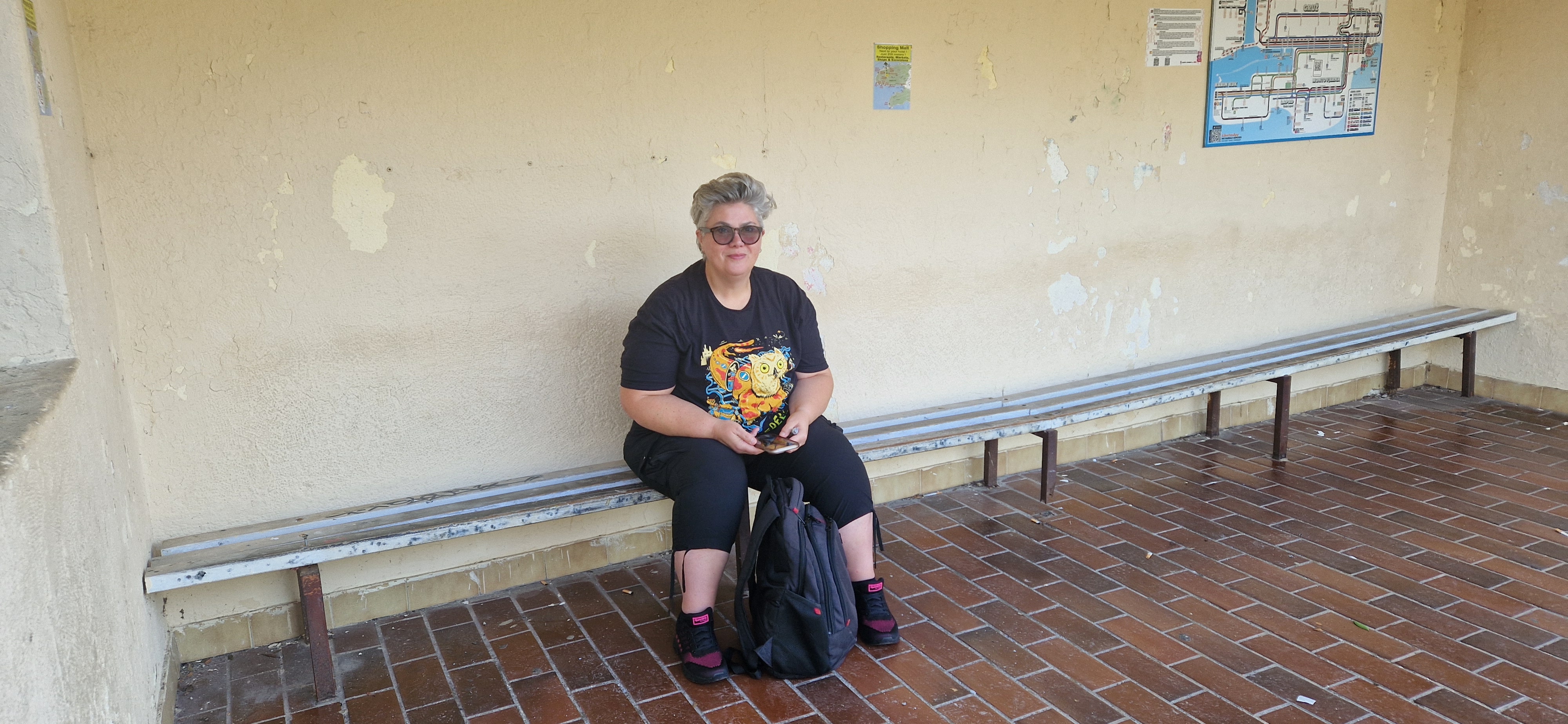
The Number Six bus drops us off outside the Pile Gate, which appears to be where most walking tours start. There are various tour guides wandering around holding up flags, signs and umbrellas making sure their various clients knew where to congregate. Our guide, yet again, is from the international network of Free Tours. A local guide takes you around the relevant city free of charge. Although at the end, it is expected that you tip. Very often the guide makes more than a proper paid guide.
Our tour guide today, I’ll call him Marko, because that’s his name, introduces himself and asks where we are all from. When he learns that we are from Wales he tells us that he recently travelled to Cardiff to watch Wales V Croatia.
I tell Marko that I recently travelled to Osijek to watch Croatia V Wales. The conversation went something like Marko: “Where the fuck is Osijek?”
Me: “It’s where Croatia played Wales recently”.
Marko: “Ah, you mean Osijek”
I suppose it doesn’t make much sense written down: it’s a pronunciation thing. But it does prompt Marko to comment that the vast majority of visitors to Croatia visit the coast. Very few people visit places like Osijek.
And boy do people visit the coast. The country has a population of four million people, but they have twenty million tourists each year. Dubrovnik now effectively only has one industry. Tourism. The rise of AirBnB in the old town has led to a shrinking of the population of residents to just over a thousand, because people can make fortunes renting out their homes. It’s a subject that is starting to worry a lot of people, all over the world In fact, we watched an article about this very subject on BBC World News this very morning.
But Dubrovnik is a town that is no stranger to evolution, change and reinventing itself. When the town was first founded back in the 7th century there wasn’t a lot of room, due to the geography of the area. It is built between two steeply rising cliffs. So much of the flat area around the centre of town is the result of building out into the sea, creating a man made area displacing the sea, similar to Venice.
Inevitably, due to its location along the Silk Route, and it’s access to the sea the city thrived on trading of goods.
Empires came and empires went and Dubrovnik also became known as a centre for diplomacy. Living on an island like the British Isles, which has been reasonably established as England, Wales, Scotland and Ireland for a considerable time, it’s easy to forget that the countries of mainland Europe were changing their borders up until quite recently. The break up of Yugoslavia is a good example, and much of Yugoslavia was part of the Ottoman Empire until the First World War. And if Russia has its way, the borders of Ukraine might change in the next few years.
Dubrovnik has been part of the Byzantine Empire, the Republic of Venice, the Kingdom of Dalmatia and many more over the years. Only since 1992 has it been part of modern Croatia.
Whilst it was occupied by Napoleon’s French empire, it was hit by a devastating earthquake in 1667. Much of the city was rebuilt at that time, just the start of constant rebuilding that makes it difficult to the untrained eye to put a date on buildings.
The city went through two world wars and came out undamaged. It didn’t fare so well in the Homeland War of the early 1990s.
After the death of President Tito, one by one, the constituent countries of Yugoslavia, of which Croatia had been a part since the the early twentieth century, decided they wanted independence. Serbia, who saw themselves as the top dogs in Yugoslavia and effectively were in charge of the Yugoslavia National Army, were not happy about this and embarked on a series of wars trying to stop this march toward independence.
It had been thought that the fact that Dubrovnik was such a well preserved ancient city, meant that Serbia would not attack it. Wrong.
The Serbs thought they would be able to take Dubrovnik quite quickly, but after seven months of seige the Serbs were eventually pushed back. It was a disaster both militarily and in terms of public relations, with the outside world condemning the actions of Serbia. It would not be the last time.
Now I hasten to add, this is a blog I’m typing on my phone whilst sat in a hotel overlooking Dubrovnik Harbour, whilst I’m waiting to go out and do more exploration. The above is a very simplistic overview of a very complicated history. If you check out yesterday’s blog I’ve suggested some further reading if you want to learn more.
But anyway, Marko wasn’t even born at the time of the war, but manages to give us a good insight into the history of the town, including the Cathedral which was built literally on top of another cathedral when they built up the city (See above).
Marko advises us that we are at the end of the tourist season and shows us photos of what the city is like at it’s peak. It looks like Camden Market the week before Christmas. Apparently the number of tourists massively increased following the release of Game of Thrones, which uses Dubrovnik for the filming of scenes set in King’s Landing.
There are shops all over the town selling Game of Thrones merchandise, numerous Game of Thrones walking tours and some pubs even serve things like Burgers of Shame.
After tipping Marko we head towards the cable car that can take you up to the mountain overlooking the town. There’s a lot of steps up the side of the harbour, with many buildings crammed into every spare inch. We are half way up the steps when we take a breather. At this point we are pounced upon by a waiter who makes us sit down to drink cold cider and eat pasta.
After a rather bohemian break we continue our journey to the cable car, pausing occasionally to browse fridge magnets, shout ‘shame’ at passing strangers and catch our breath.
Eventually we are stepping out of the modern cable car on top of Mount Srd, with spectacular views over Dubrovnik for miles in each direction, we get sight of the many islands along the coast, and can see far out across the Adriatic sea.
And next to the cable car, there’s a pub. So we sit taking in the view for an hour, beer in hand.
We haven’t got all day to be drinking though, so we walk past the stall selling 4×4 cross country buggy trips, to the museum of the Homeland War.
The museum is sited inside a twelfth century fort that was briefly occupied by the Serbs during the Siege of Dubrovnik. It is quite sobering seeing photos of streets that we have just walked down totally free of people and scarred with bomb craters. All because people who lived in one country decided they wanted to live in another country, and the other country didn’t want to lose control. Yet again I find myself struggling to understand the inhumanity of some humans. The bizare logic that allows arbitrary feelings like patriotism, nationalism and xenophobia to manifest itself in violence. And the evil egotism that leads some to go to any means they feel necessary to exert power over others.
It’s all the more poignant as the museum is in a fort that has played such an important part in all of this violence.
We wander back to the cable car, silenly taking in the views, views that have played a major part in me wanting to visit this city for so long.
Then we go to the pub and plot what we will do tomorrow.
